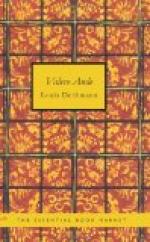The destructions wrought by dysaemia in these various forms, cannot be fully described in this brief abstract. They can all be reduced, arrested and forced to give place to healthy regeneration by the hygienic-dietetic healing system. In each case, however, the possibility of cure will depend entirely on the degree of decomposition which has been reached. If the trouble is from hereditary tendency it is obviously harder to fight, and a long regenerative treatment may be anticipated. If attacked at an early stage, complete restoration to health is possible in a comparatively short period.
The most careful and thorough investigation by the physician must precede any treatment. It is his task to prescribe accordingly, with the development of the disease and its gradual disappearance.
The simultaneous direct and indirect affection of various tissues, especially of the lymphatics, will necessitate more complicated application of the various nutritive compositions.
THERAPY.
Diet: I. For the Anaemic.
All that grows in the sunshine makes blood. Therefore, the food of an anaemic person should consist mainly of articles of diet which grow above the surface, such as green vegetables, fresh greens, fruit, berries. Since the blood has already grown very thin, as little fluid as possible should be taken, and for this reason the boasted milk cures are far from advisable. If all hot reasoning is avoided and little salt and sugar are used, no thirst will be felt. Coffee, tea, beer, wine and other alcoholic drinks are to be avoided because they consume oxygen, such as also do thin soups, lemonade, malt coffee, and other beverages of slight food value.
Breakfast: In summer, a glass of cold milk, sweet or sour, and with it strawberries, huckleberries, cherries, or other fruit in season; in winter milk or cocoa, oatmeal porridge with bread (whole wheat, whole rye), or something similar. When the bowels are sluggish, take a little fruit on rising in the morning and at bedtime.




